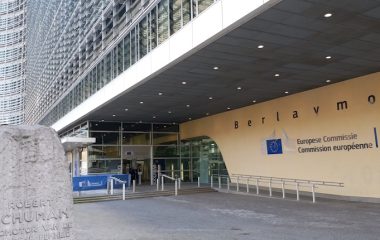
Photo: UNEP
The global top 1% of income earners will need to reduce their CO2 footprint by at least 30 times to stay in line with the Paris Agreement targets while the poorest 50% of the world’s population could actually increase it by several times, according to the latest Emissions Gap Report, produced by UN Environment Programme (UNEP).
Each year, the Emissions Gap Report assesses the difference between anticipated emissions and the levels consistent with the Paris Agreement goals of limiting global warming in this century to well below 2°C and pursuing 1.5°C.
This is another wake-up call for the richest to take responsibility for tackling climate change because their activities are a major contributor.
The document reveals that, despite a brief dip in carbon dioxide emissions caused by the COVID-19 pandemic, the world is still heading for a temperature rise in excess of 3°C.
Average annual per capita consumption emissions of the richest 1% are 75 tCO2e, and the poorest 50% persons account for around 1 tCO2e each
Reforming the consumption behaviour is one of the means to initiate change, and the wealthy bear the greatest responsibility.
According to the report, the combined emissions of the richest 1% of the global population account for more than twice the combined share of the poorest 50%.
The compliance with the 1.5°C goal of the Paris Agreement will require reducing consumption emissions to an annual per capita lifestyle footprint of around 2–2.5 tCO2e by 2030. The current average for the richest 1% is 75 tCO2e, and the poorest 50% account for around 1 tCO2e per person.
It means that the richest 1% would need to reduce emissions by at least a factor of 30, while per capita emissions of the poorest 50% could even increase by around three times, the report reads.
Consumption habits must be changed
The report underlines the importance of changing consumption habits – not just to reduce climate change, but to address nature loss and pollution.
There are numerous examples of how governments can promote sustainable lifestyles.
- Replacing domestic short-haul flights with rail.
- Incentives and infrastructure to enable cycling and car-sharing, while restricting petrol cars.
- Improving energy efficiency of housing. New UNEP research on buildings showed that the buildings and construction sector accounted for 38% of total global CO2 emissions. To get on track for net zero carbon building stock by 2050, direct building CO2 emissions need to fall 50% by 2030.
- Policies to reduce food waste.
A green pandemic recovery could cut 25% off the GHG emissions expected for 2030
The report finds that in 2019 total greenhouse gas emissions, including land use change, reached a new high of 59.1 gigatonnes of CO2 equivalent (GtCO2e). Global greenhouse gas emissions have grown 1.4% per year since 2010 on average, but 2.6% was registered for 2019 due to a large increase in forest fires.
As a result of reduced travel, lower industrial activity and lower electricity generation this year due to the pandemic, CO2 emissions are predicted to fall up to 7% in 2020. However, the dip only translates to a 0.01°C reduction in global warming by 2050.
A low-carbon pandemic recovery could cut 25% off the greenhouse emissions expected for 2030, based on policies in place before COVID-19.
Such a recovery would far outstrip the savings foreseen with the implementation of unconditional Nationally Determined Contributions under the Paris Agreement, and put the world close to the 2°C pathway, according to the report.


















Be the first one to comment on this article.